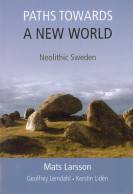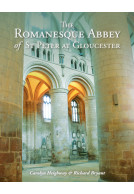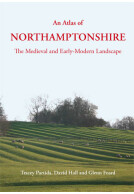Towards a Social Bioarchaeology of the Mycenaean Period (Paperback)
A Biocultural Analysis of Human Remains from the Voudeni Cemetery, Achaea, Greece
By
Ioanna Moutafi
Imprint: Oxbow Books
Pages: 328
Illustrations: b/w and colour
ISBN: 9781789254822
Published: 6th May 2021
Script Academic & Professional
Imprint: Oxbow Books
Pages: 328
Illustrations: b/w and colour
ISBN: 9781789254822
Published: 6th May 2021
Script Academic & Professional
You'll be £16.00 closer to your next £10.00 credit when you purchase Towards a Social Bioarchaeology of the Mycenaean Period. What's this?
+£4.99 UK Delivery or free UK delivery if order is over £40
(click here for international delivery rates)
Need a currency converter? Check XE.com for live rates
(click here for international delivery rates)
Need a currency converter? Check XE.com for live rates
This book investigates the complex relationship between funerary treatment and wider social dynamics through a contextual analysis of human skeletal remains and associated mortuary data from Voudeni, an important Mycenaean (1450-1050 BC) chamber tomb cemetery in Achaea, Greece. Voudeni is one of the most significant sites of Achaea, thoroughly investigated under the direction of the Honorary General Director of Antiquities, Dr Lazaros Kolonas. Over 60 chamber tombs, spanning the entire Late Helladic III period, have been excavated, yielding an unprecedented wealth of biocultural information. This study explores the post-mortem treatment of the body in the Voudeni cemetery, through a novel interpretive approach that transcends unproductive cross-disciplinary divisions. This biosocial approach integrates traditional archaeology, current reflections in mortuary archaeological theory and cutting-edge bioarchaeological methods, primarily focused on funerary taphonomy and archaeothanatology of commingled skeletal assemblages. The author proposes that the most effective route to explore the social dimensions of mortuary data is through an emic understanding of historically situated actions and experiences, both of the living actors, the mourners, and of the dead themselves. Human skeletal remains are used as the primary strand of evidence, both as the object of the acts of the living and the subject of their own lived experiences. Most importantly, this study aspires to show how reconciliation between abstract theoretical advances and empirical biocultural data may be possible, providing the most insightful path to a better understanding of the archaeological mortuary record.
The book provides a thorough background on Mycenaean mortuary research and explores the topic in successive stages: a) theoretical and methodological framework, b) detailed taphonomic analysis and osteological results of 20 tombs, c) multivariate analysis of bio-cultural data across socio-temporal parameters (with special emphasis on the distinction between the palatial LHIIIA-B and the transitional post-palatial LHIIIC period), and d) final synthesis, addressing questions pertaining to changing social conditions in Achaea and key issues of current Mycenaean mortuary research. These include: tomb re-use; form, diversity, sequence and frequency of mortuary activities; mortality profiles; differential inclusion, visibility and funerary treatment of different groups/identities; changes in treatment of the dead body, reflecting shifts in notions of the self and social relationships. The results shed new light on social developments in Mycenaean Achaea, showing that the complex interaction between changing social conditions and mortuary practice is often reflected in subtle, yet meaningful, shifts of emphasis in the post-mortem treatment of bodies and bones, rather than in blatant radical changes.
There are no reviews for this book. Register or Login now and you can be the first to post a review!
Other titles in Oxbow Books...















